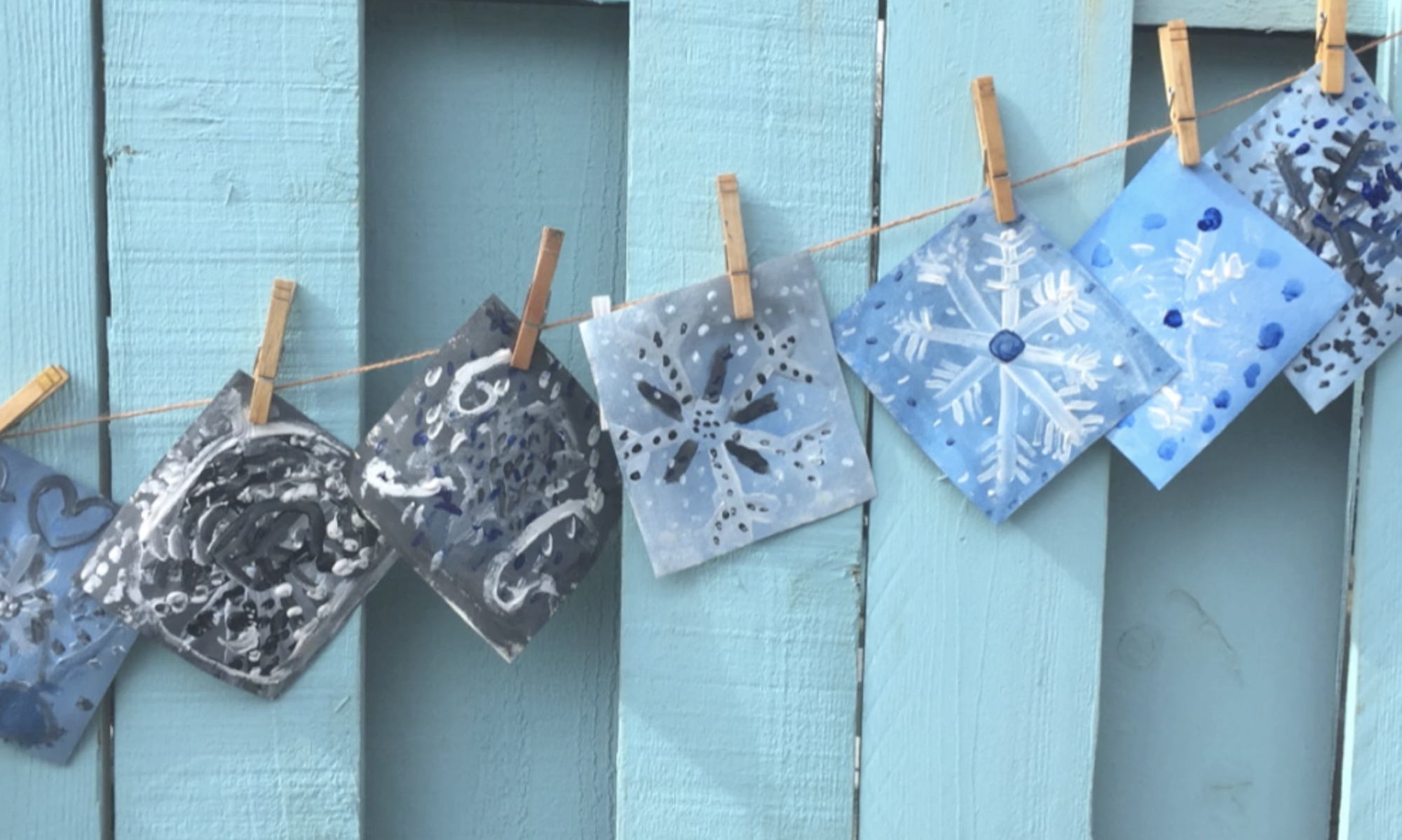
I’ve painted with so many children in staged Montessori art spaces over the years, and I’ve also observed how they best learn to paint. So I wanted to share some tips on how to support concentration and independence while kids paint. These tips can be helpful if you’re trying to create more Montessori painting activities within your classroom or home.
Here are tips on how you can support creative painting sessions:
- Flow & Concentration
- Independence
- Exploration & Discovery
- Creative Experimentation
- Freedom Within Limits
Support Flow & Concentration
Allow uninterrupted periods of creative time while your students are working. When you don’t interrupt children’s painting, they can enter more creative flow states with heightened concentration. Children can concentrate and go deeper into learning new ideas when not interrupted. To help these flow states try to observe your students from a distance. All too many times creative flow is interrupted by teachers or parents. You should practice more uninterrupted work periods by being conscious of how you are interacting with your child during their painting sessions.
Support Independence
You can support your students’ independence by preparing their art environment to support their painting independence. Think about how you have arranged their painting space. Is their working space at their level of abilities? Is their drying area near and easy for them to hang or lay their paintings? Are materials all set up and easy for them to reach and get to work? Have you given them the right amount of demonstrations so they know how to use all the materials properly? By revisiting demonstrations you can support your child to work more independently.

Support Exploration & Discovery
Exploration and discovery can come in many ways. Allow your children the freedom to choose their materials like, paint colors, and paint brush sizes. Or the colors they’re drawn to paint with. You can even give them the freedom to choose their size of papers they want to paint on. Children flourish when they are able to explore how materials behave, or even discover how they work in different ways. The process of exploration and discovery are the best ways young children learn painting skills. Allow for lots of discovery time. Young children learn to paint over a long period of time. Try to support more exploration and discovery rather than the outcome.
Support Creative Experimentation
When children go into a different direction than you had planned, take a deep breath… and allow their experimentation to happen. Example: like not using the paintbrush the way you demonstrated, or choosing the colors you planned your example. You might be thinking green would look lovely to paint turtles, but your student thinks purple turtles are better! If your child uses their fingers to paint instead of the paintbrush you took time to stage. As long as your child is safe and not disrespecting the art materials, simply allow this type of creative experimentation to go on. This is truly considered one of the artistic processes the National core art standards supports, it’s called INVESTIGATE!

Support Freedom Within Limits
YES discovery and exploration are part of the creative process, but we can provide freedom within limits by presentations and demonstrations that support healthy limits. We can demonstrate where painting will take place and where it’s accepted in the art environment, and where it’s NOT allowed.
One of the biggest lessons I learned early on, which I share in several of my kids’ painting books, is that you need to explain to children where painting is not allowed like the walls or the future, or how walking around with loaded paintbrushes are not allowed outside of their art workspace. I also explain to children how to set-up, and clean up when they are done painting.
As a homeschool mom, I had to even explain this all the time to two of my little artists. The freedom should be in what they want to express or paint, but not where they want to paint. 😉
I hope these tips help you bring the joy of painting into your Montessori spaces.
If you want to learn more I recommend learning more about my books, video training, and art supplies.

Early Childhood Art Guide
Visual Arts Teaching Guide
for 13 Months – 6 Years Old
This book includes:
✅ My proprietary art teaching method
✅ The proper and complete list of art materials
✅ A guide for staging and setting up a successful art environment
✅ Tips and art lesson ideas for early childhood
✅ A convenient three-ring binder presentation

